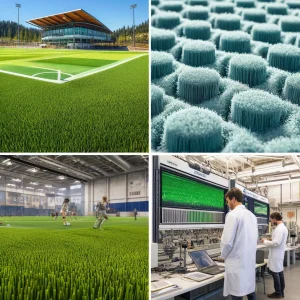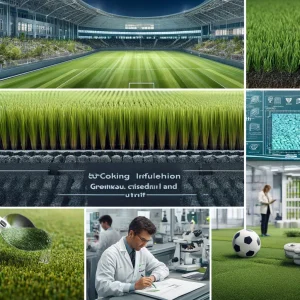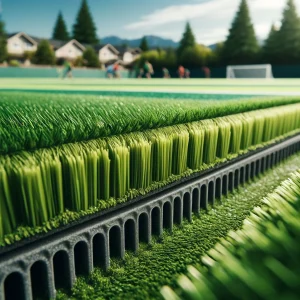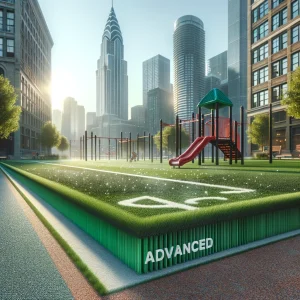Synthetic turf has emerged as a frontrunner in the quest for landscaping solutions that conserve resources and maintain aesthetic appeal. Modern advancements in this technology offer substantial environmental benefits and cater to the practical needs of diverse users, from homeowners to municipal planners. This blog post delves into the eco-friendly and low-maintenance alternatives provided by the latest synthetic turf technologies, spotlighting their relevance in various settings, including the unique climate of British Columbia.

Innovation in Materials and Design
The core of recent synthetic turf advancements lies in developing new materials, such as polyethylene fibres, which are softer and more durable than their predecessors. These fibres mimic grass’s natural bounce and cushioning while ensuring high UV resistance and colour stability. Additionally, cooling infills made from hydro-chilled sand are now used to significantly reduce the heat absorption commonly associated with older turf models, making outdoor spaces more comfortable during the warmer months.

Comparative Analysis of Leading Brands
Brands like TurfTech and GreenLawn are at the forefront of integrating these innovative materials into their products. TurfTech, known for its rigorous environmental standards, utilizes a fully recyclable polyethylene that reduces water usage and chemical runoff. Meanwhile, GreenLawn focuses on the longevity and resilience of its turf, which is particularly beneficial in regions like British Columbia, where varying weather patterns demand robust landscaping solutions.
However, the production of synthetic turf has environmental drawbacks. The manufacturing process involves energy-intensive activities, and while the end products are durable, issues related to the disposal of artificial turf remain challenging. Both brands are actively working on solutions to improve recyclability at the end of their products’ life cycles.

Tailoring to British Columbia’s Climate
The high precipitation levels in British Columbia pose unique challenges for landscaping materials. Synthetic turf offers a significant advantage by providing excellent drainage systems that prevent water logging, a common issue with natural grass in the region. Local case studies, such as the installation at Vancouver’s Community Sports Complex, illustrate how synthetic turf withstands heavy rain and frequent use, maintaining its integrity and appearance without the mud and upkeep required by natural lawns.

Environmental Considerations and Future Trends
The environmental impact of synthetic turf extends beyond its use phase. As brands innovate to make their products fully recyclable, there is also a focus on reducing the carbon footprint associated with producing and transporting these materials. Ongoing research aims to enhance the bio-based content in turf materials, thus further reducing the reliance on petroleum products and lowering the overall environmental impact.
The future of synthetic turf looks promising, with advancements aiming to enhance ecological benefits and functionality. Research focuses on improving the materials’ sustainability and exploring new methods to reuse synthetic turf at the end of its life cycle.
Synthetic turf stands as a testament to the power of innovation in meeting the dual goals of environmental sustainability and practical landscaping needs. These advancements offer a viable and attractive alternative to natural grass for regions like British Columbia, where weather and ecological conservation are significant concerns. As technology evolves, it provides improved solutions that benefit both the planet and those who enjoy these green spaces.